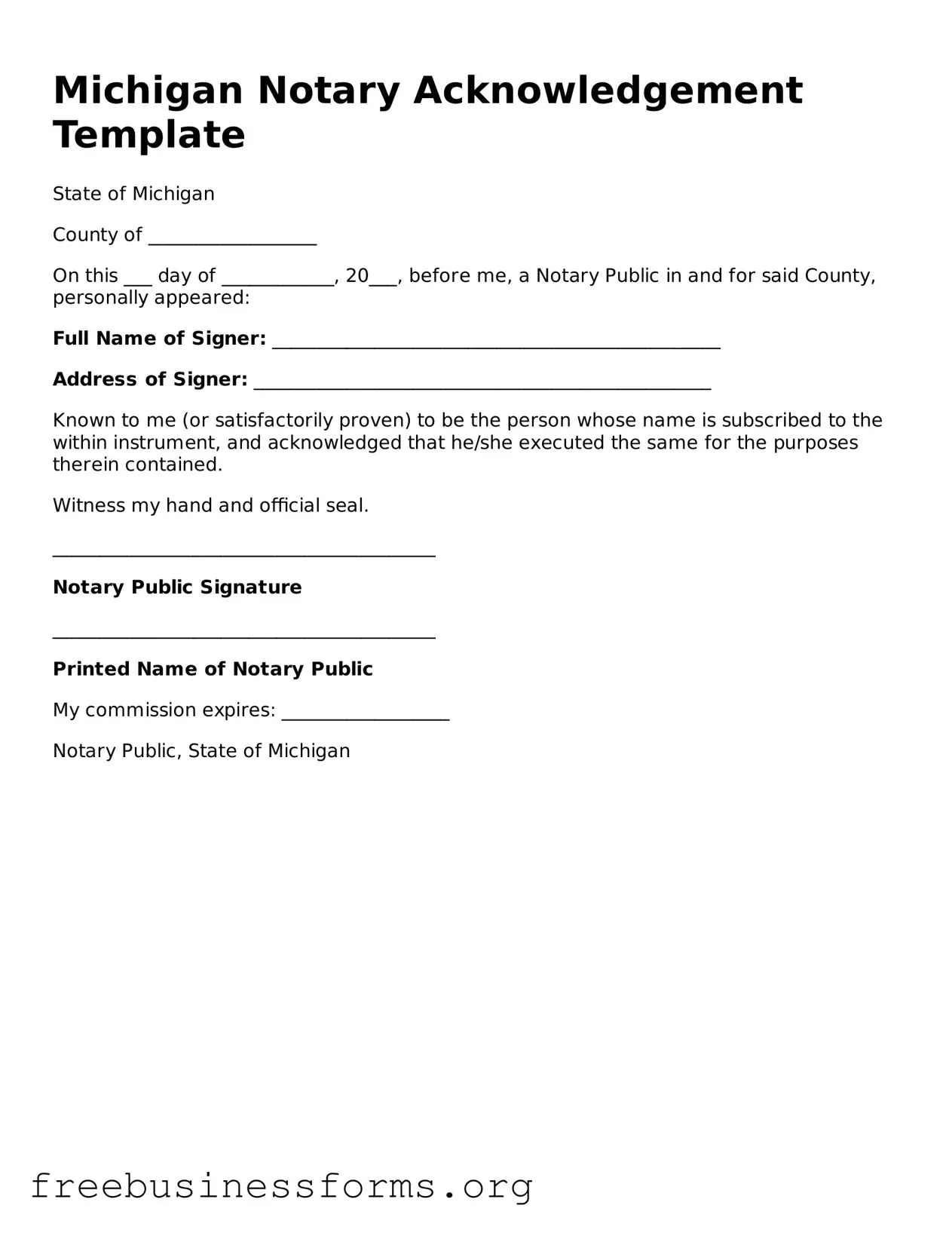Blank Notary Acknowledgement Template for Michigan
The Michigan Notary Acknowledgement form serves as a crucial document that verifies the identity of a signer and confirms their willingness to sign a particular document. This form is essential in various legal and financial transactions, ensuring that the process is both secure and legitimate. Understanding its purpose and proper use can help individuals navigate important agreements with confidence.
Open Form Here
